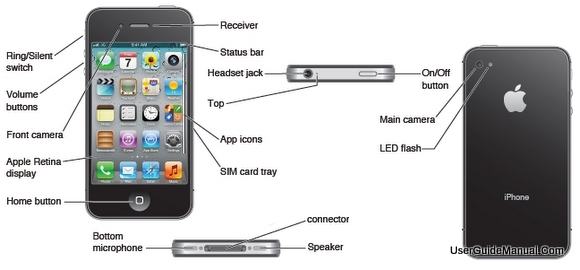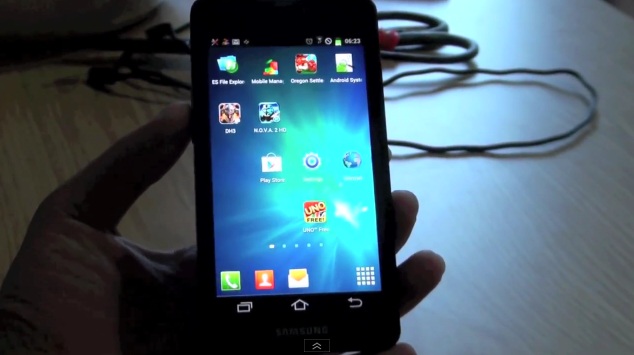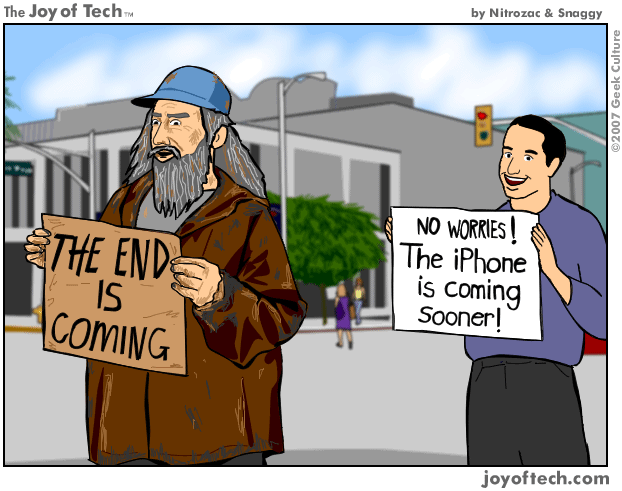How Tech Companies Are Turning Planned Obsolescence Into Planned Success

Planned obsolescence is far from a new idea in the world of consumer electronics – GM Motors were the first to introduce it to us in the 1920s, home-owners have been cursing the life-cycle of their washing machines ever since – but it’s becoming ever more of a distraction, at least for myself, where yearly release schedules contradict the hyperbole that works its way around the tech world, immediately following a press conference for the next big thing. Technology is no longer built to last.
 But what exactly is ‘planned obsolescence’ for the uninitiated? Defined by The Economist as, “a business strategy in which the obsolescence (the process of becoming obsolete—that is, unfashionable or no longer usable) of a product is planned and built into it from its conception. This is done so that in future the consumer feels a need to purchase new products and services that the manufacturer brings out as replacements for the old ones.” Sound familiar? That’s because technology companies are parading planned obsolescence right in front of us, disguising annual release cycles as ‘revolutionary’ steps for the respective brand (or ‘resolutionary’ if you’re Apple) when the chances are your previous purchase is approaching the end of its all-too short life cycle.
But what exactly is ‘planned obsolescence’ for the uninitiated? Defined by The Economist as, “a business strategy in which the obsolescence (the process of becoming obsolete—that is, unfashionable or no longer usable) of a product is planned and built into it from its conception. This is done so that in future the consumer feels a need to purchase new products and services that the manufacturer brings out as replacements for the old ones.” Sound familiar? That’s because technology companies are parading planned obsolescence right in front of us, disguising annual release cycles as ‘revolutionary’ steps for the respective brand (or ‘resolutionary’ if you’re Apple) when the chances are your previous purchase is approaching the end of its all-too short life cycle.

Although planned obsolescence is legal, it doesn’t seem at all ethical. The most viable case study when looking at the potential commercial benefits and the effect felt by us as consumers is the ‘reality distortion field’ and business practices of Apple: a company whose success largely rides on the back of creating so much buzz for its upcoming product that the whole world is driven into some kind of boyish frenzy over it, convinced beyond all doubt that they simply have to have it. An Apple launch is no longer just another minor upgrade in a long-line of products, but a milestone in tech and a global press event of epic proportions.
Already, the hype machine is working full capacity in the months leading up to two of the most anticipated smartphones of the year. Samsung is due to unveil the successor to the Galaxy S II in the coming days – we’ve done our own fair amount of coverage of that particular handset – while rumours for the iPhone 5 are heating up day-by-day. Adding fuel to the fan-boy fire, Piper Jaffray analyst Gene Munster has speculated, in an interview with Bloomberg, the sixth-generation iPhone will be “the mother of all upgrades” and predicts a new form factor, as well as the addition of 4G LTE. He expects “lines around shopping malls” when it comes out this October, a prediction that Apple will not only hope for but something it expects to happen, having seen it occur time and time again.
anticipated smartphones of the year. Samsung is due to unveil the successor to the Galaxy S II in the coming days – we’ve done our own fair amount of coverage of that particular handset – while rumours for the iPhone 5 are heating up day-by-day. Adding fuel to the fan-boy fire, Piper Jaffray analyst Gene Munster has speculated, in an interview with Bloomberg, the sixth-generation iPhone will be “the mother of all upgrades” and predicts a new form factor, as well as the addition of 4G LTE. He expects “lines around shopping malls” when it comes out this October, a prediction that Apple will not only hope for but something it expects to happen, having seen it occur time and time again.
To understand Munster’s predictions is to understand exactly why the wider consumer market feels the need to upgrade after just a year or two. Are we now so in awe of the latest and greatest technology has to deliver that we simply must own only the newest iteration of a product line? Well, yes, as it happens.
The iPhone 4S, taken as an example, is what I'd personally call a meaningless upgrade over the 4; one with the same design of its predecessor (some would call it laziness, I'd just go as far to say Apple had all intentions to think of it as a stop-gap to the next), a slightly improved camera and a voice recognition assistant (Siri), which might have well been a good laugh at the start (with some fourth-wall breaking banter to boot) but is a fairly pointless feature in itself. Aside from the upgrade in processor to the A5 then, the iPhone 4S could well be considered one of the most anti-climactic phone launches in history. With hindsight, anyone who wrote it off can be considered a fool – the 4S claimed over four million sales within the first three days and sales to the day continue to “soar” (Forbes).
 Is true innovation being over-looked in favour of superficial upgrades?Technology companies have us in the palm of their hands and boy do they know it, squeezing every last dollar out of us while they're at it. So it's here where planned obsolescence comes into play. Revisiting The Economist's definition from the very start of this piece, the publication describes how a product's “process” of becoming “obsolete” - “that is, unfashionable or no longer usable - is planned and built-in from its conception”. Now, I'm certainly not implying executives from the big tech companies huddle around a big conference room table and plan to the nth degree how best to implement obsoletion (like some cackling villains from a Disney movie, presumably), but through possessing a greater understanding of exactly how such a business strategy is employed, and my own experiences with the tech I've so far noted, the bigger picture certainly becomes a little clearer.
Is true innovation being over-looked in favour of superficial upgrades?Technology companies have us in the palm of their hands and boy do they know it, squeezing every last dollar out of us while they're at it. So it's here where planned obsolescence comes into play. Revisiting The Economist's definition from the very start of this piece, the publication describes how a product's “process” of becoming “obsolete” - “that is, unfashionable or no longer usable - is planned and built-in from its conception”. Now, I'm certainly not implying executives from the big tech companies huddle around a big conference room table and plan to the nth degree how best to implement obsoletion (like some cackling villains from a Disney movie, presumably), but through possessing a greater understanding of exactly how such a business strategy is employed, and my own experiences with the tech I've so far noted, the bigger picture certainly becomes a little clearer.
Skipping the “unfashionable” part of the equation for the time being – fairly self-explanatory in an age where the latest model of a device is craved, while its predecessors are forgotten about – what I'm most interested in is the phrase “no longer usable”. Although huge tech failures like Microsoft's infamous Xbox 360 'Red Ring Of Death' and Apple's-own iPhone 4 'Antennagate' irk me, I'm not as concerned by these irreperable oversights as I am the often stubborn and arrogant ways companies like Apple implement signs of planned obsolescence in a way of getting us to shell out progressively more and more hard-earned cash.
As repair site iFixIt details, Apple practically birthed a new era of planned obsolescence within gadgets – aside from the aforementioned “unfashionable” part – the day it decided to build devices with an integrated battery. When factoring in the finite life of 300 to 500 'cycles' for lithium-ion batteries and a charging rate of once every 1-2 days, that's just over a year before your smartphone will show signs of weakness, just as you come out of your warranty period. Cheers, Apple. Arriving late to the presitigiously-attended iPhone party, it was the iPhone 4's gorgeous form factor, super-crisp display and considerable performance upgrade that led me to make the jump to the green pastures of Appledom. And yet, it will no doubt be my last iPhone purchase. Why? Because I've had nothing but problems in the months since its warranty ran out.
Chief amongst them is the gradual 'sponginess' of the very few buttons around the iPhone's exterior. At first only confined to the volume buttons and the 'Power' button (two things I can live with, if slightly irritating), but what I have come to think of as every Apple user's life-line, the 'Home' button, is now so unresponsive that is becomes painful to use the phone. Meanwhile, only one speaker works, the battery needs charging after only a days use even with minimal use and the headphone jack no longer allows connectors to be plugged into it (making the iPod meaningless, aside from using the external speaker(s)). An unfortunate incident where the phone was dropped from a small height, furthermore, has smashed the entire back of the phone. Were I a part of Apple's marketing team (I'm definitely not), I'd refer to it as a 'glass mosaic'.
first only confined to the volume buttons and the 'Power' button (two things I can live with, if slightly irritating), but what I have come to think of as every Apple user's life-line, the 'Home' button, is now so unresponsive that is becomes painful to use the phone. Meanwhile, only one speaker works, the battery needs charging after only a days use even with minimal use and the headphone jack no longer allows connectors to be plugged into it (making the iPod meaningless, aside from using the external speaker(s)). An unfortunate incident where the phone was dropped from a small height, furthermore, has smashed the entire back of the phone. Were I a part of Apple's marketing team (I'm definitely not), I'd refer to it as a 'glass mosaic'.
All that I could live with, of course, were repairing the phone not an inconvenient, costly hassle. Apple and many like it are doing all they can in their power to keep users out of reach of the products' innards – not a safety measure, but a way of charging extorionate repair costs (Apple currently charges flat fees of £126.44 + £7.44 shipping fee for the first to fourth gen iPhone, the iPhone 4S's repair cost is an added £20 on top of that) or swaying those consumers who have an out-of-warranty device to upgrade to the next version. It's a nifty trick and either way, the technology company almost always wins. How's that for innovation?
Richard Birkett